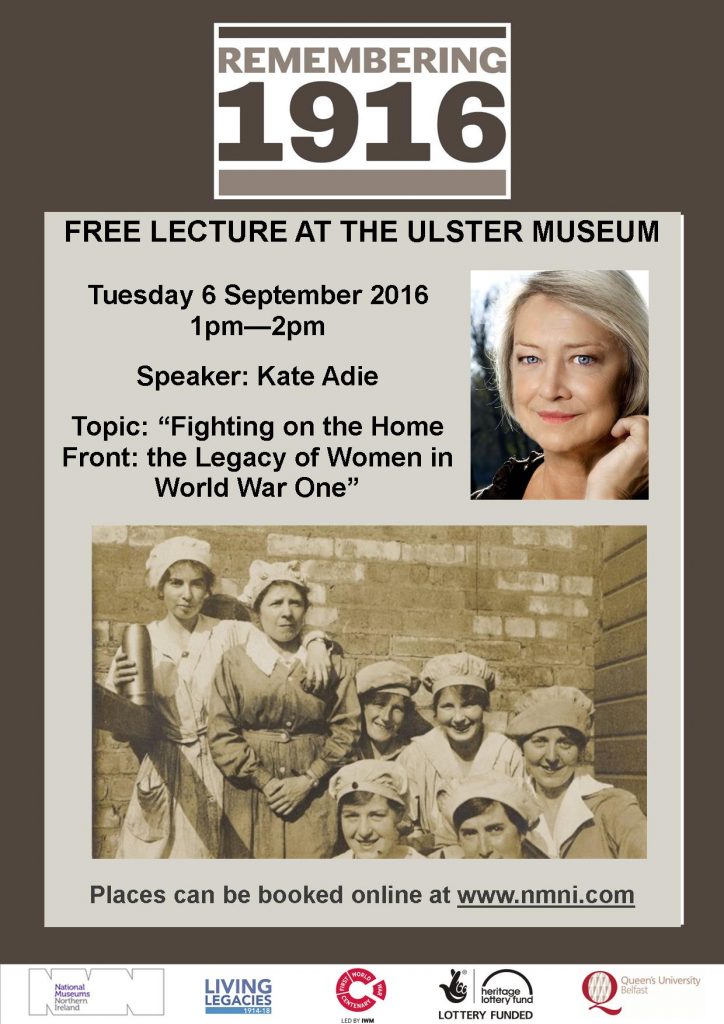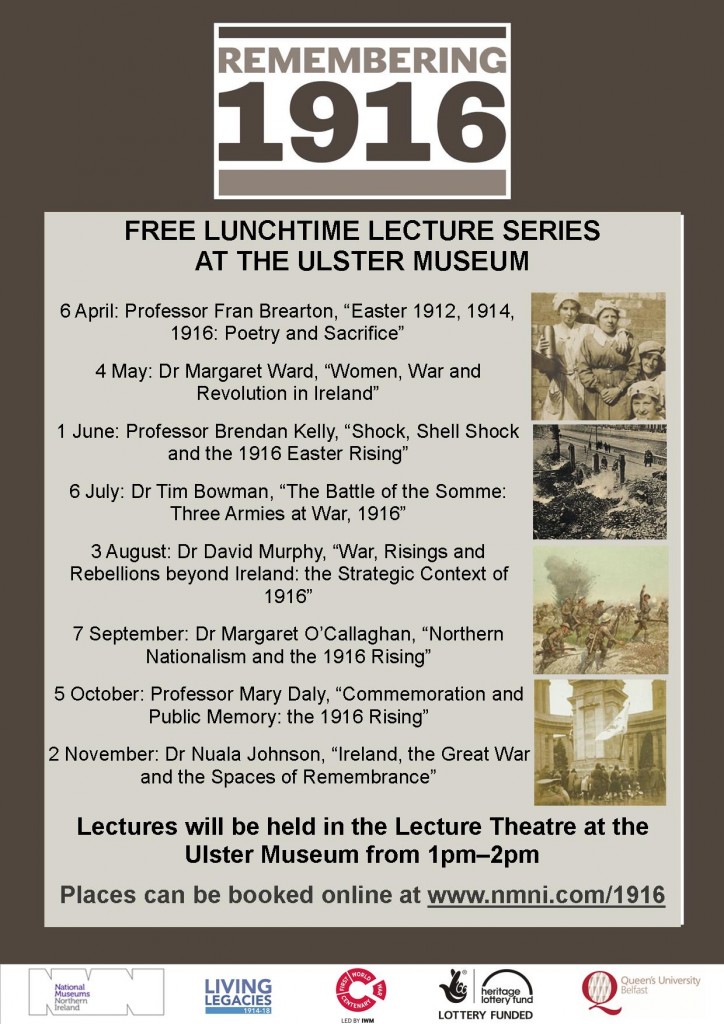Friday 7th May 2021 marks the 106th anniversary of the sinking of the RMS Lusitania by the German Imperial Navy. It was one of the worst civilian atrocities of the Great War and played a role in bringing the United States of America into the war. Nigel Henderson, a researcher with History Hub Ulster, will be giving an online talk about the tragedy focussing on some of the local people who perished in the sinking on the anniversary.
RMS Lusitania was built on Clydebank for the Cunard Line by John Brown and Company. When RMS Lusitania was launched on 7th June 1906, she was the largest ship in the world with ten decks accommodating 2,298 passengers and 827 crew. She consumed 840 tons per day and had a maximum speed of 26.35 knots. Her maiden voyage was in 1907, departing Liverpool 7th September and arriving in New York six days later.
Some firsts for RMS Lusitania:
- first British vessel with four funnels,
- first ship larger than 30,000 gross tons,
- first ship wider than the Great Eastern of 1858,
- first ship to cross the Atlantic in under five days.
In 1915, Lusitania had accommodation for 2,165 passengers and 850 crew, and was fitted with twenty-two standard lifeboats and twenty-six collapsible lifeboats. The accommodation for passengers was split into 563 first class, 464 second class, and 1,138 third class.
When RMS Lusitania left New York on 1st May 1915, there was a total complement of 1,960 people – 1,264 passengers, a crew of 693 and three German stowaways. When detected, the stowaways were held under guard as they were deemed to be enemy agents. Three of the passengers were distressed seamen being given passage home in Third Class.
RMS Lusitania was torpedoed by the German submarine U-20 on 7th May 1915 and sank in eighteen minutes. The wreck lies 300 feet below the surface eleven miles south of the Old Head of Kinsale, County Cork.
In total 1,197 people died during or as a result of the sinking. 788 passengers, 402 crew and the three stowaways died on 7th May 1915, and a further four passengers died after being brought to shore. 128 of the fatalities were citizens of the United States of America, including Alfred Gwynne Vanderbilt, one of the richest men in America. The sinking of the Lusitania turned American opinion against Germany, although the United States would not declare war on Germany until April 1917.
An Author and Justice of the Peace
 Archibald McIlroy of Drumbo was a stockbroker and Justice of the Peace who had emigrated to Canada with his wife to work as missionaries. Archibald was a published author in the Kailyard style, late 19th-century movement in Scottish and Ulster Scots writing that was characterised by a sentimental idealisation of humble village life. His novels captured the ethos of rural life, particularly from a Presbyterian perspective. Among his novels were When Lint was in the Bell, The Auld Meetin’ Hoose Green (1898), The Banker’s Love Story. Archibald and Anna McIlroy sailed in Second Class and Archibald, who was 55 years old, is commemorated on the war memorial tablet in Ballycairn Presbyterian Church, Ballylesson. Anna Caroline McIlroy died in Toronto on 21st July 1942 at the age of 77.
Archibald McIlroy of Drumbo was a stockbroker and Justice of the Peace who had emigrated to Canada with his wife to work as missionaries. Archibald was a published author in the Kailyard style, late 19th-century movement in Scottish and Ulster Scots writing that was characterised by a sentimental idealisation of humble village life. His novels captured the ethos of rural life, particularly from a Presbyterian perspective. Among his novels were When Lint was in the Bell, The Auld Meetin’ Hoose Green (1898), The Banker’s Love Story. Archibald and Anna McIlroy sailed in Second Class and Archibald, who was 55 years old, is commemorated on the war memorial tablet in Ballycairn Presbyterian Church, Ballylesson. Anna Caroline McIlroy died in Toronto on 21st July 1942 at the age of 77.
A Mill Manager
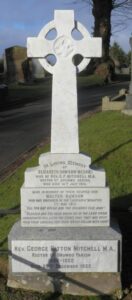
Walter Mitchell, also of Drumbo, was a manager at the Island Spinning Company in Lisburn when he was offered a job as the assistant manager of the Marshall Mills at Kearny in New Jersey. He and his wife Jeanette were married on 28th December 1912 at Drumbo Parish Church and later the same day they boarded SS California at Londonderry bound for a new life in the United States, where their son, Walter, was born in August 1914. The Mitchell family was travelling in Second Class and Jeanette lost her husband and infant son. Walter Mitchell senior, who was 27 years old, is buried in the graveyard at Holy Trinity Church in Ballylesson. Walter Mitchell junior, who was ten months old, was buried in one of the mass graves in Queenstown (now Cobh).
 A Typist
A Typist
Sarah Hale, who was born in Ballymena but lived in Belfast, was employed as a typist by the Cunard Line. Sarah was 29 years old when she died and, as she was part of the ship’s complement, she is commemorated as an official war fatality by the Commonwealth War Graves Commission. Sarah’s body was returned to the family home for burial in Belfast City Cemetery on 12th May.
 A Photographer
A Photographer
Robert McCready was born near Maghera but lived in the Oldpark area of Belfast. Robert had worked as a photographer for Messrs Charles and Russell Photographers of Royal Avenue for twelve years when he emigrated to North America in 1913. He was a passenger in Third Class and was returning to Ireland to enlist for war service. He was 29 years old when he died and is recorded on the Roll of Honour for Rosemary Street Presbyterian Church.
Gavin Bamford, Chair of History Hub Ulster, said, “Nigel has pieced together several interesting personal biographies relating to the sinking of RMS Lusitania. A column of this nature does not facilitate in-depth details for the people covered in the online talk on Friday 7 May.
Details of the how to access the talk are included in an event page of History Hub Ulster’s Facebook page – www.facebook.com/events/1025501634647947/. It promises to be an evocative presentation.”


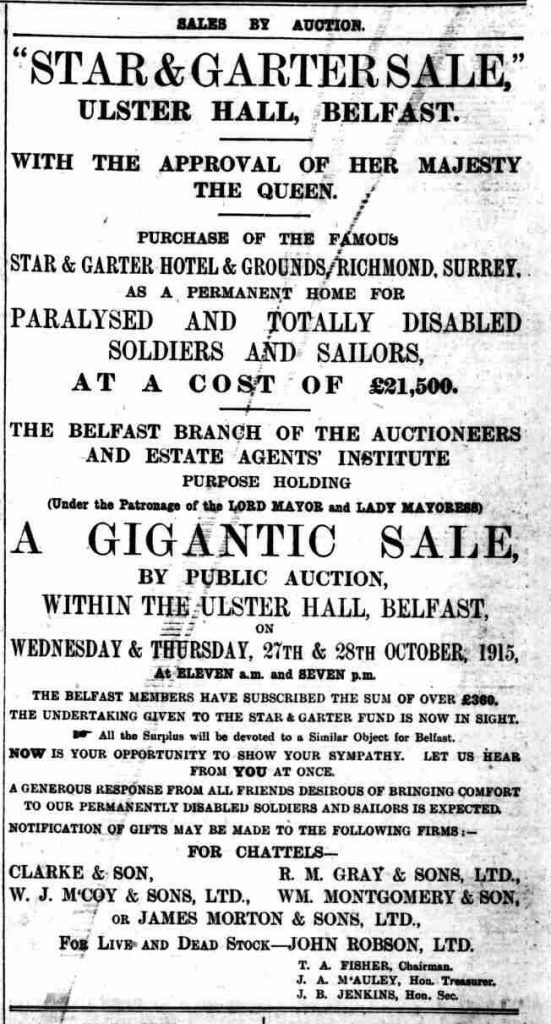
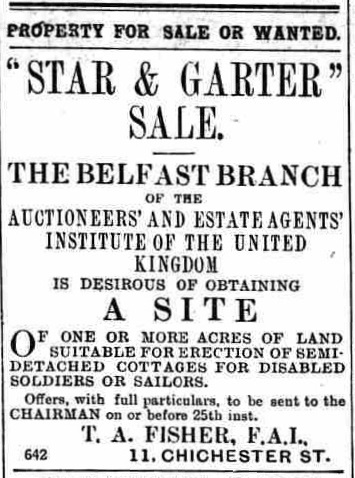
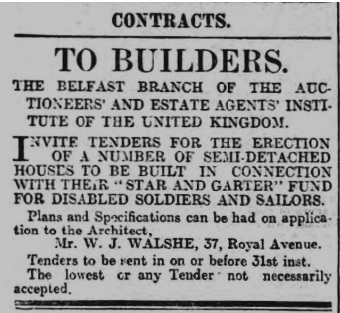
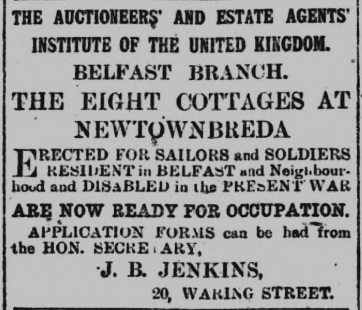
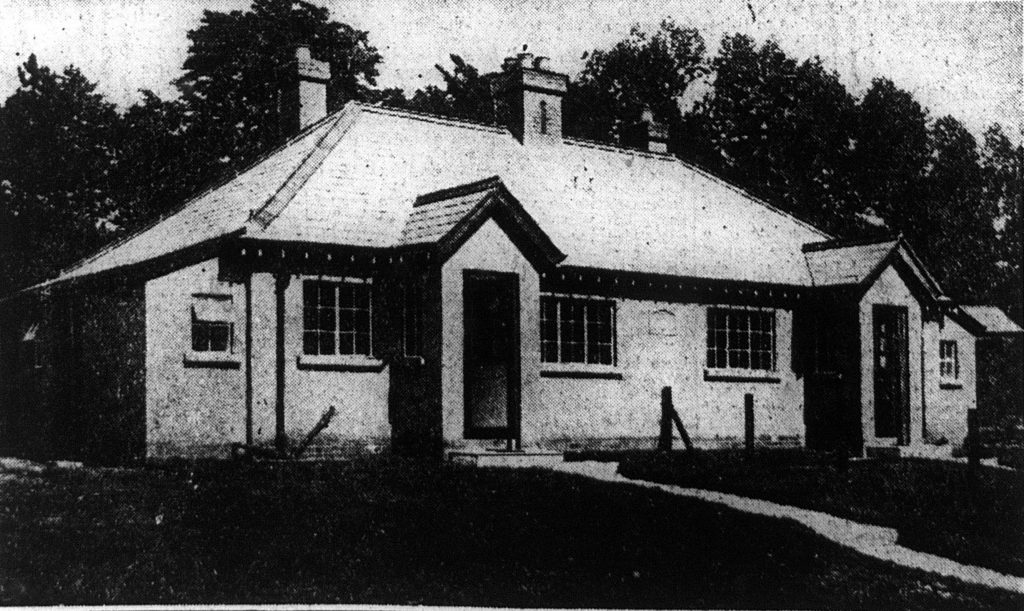
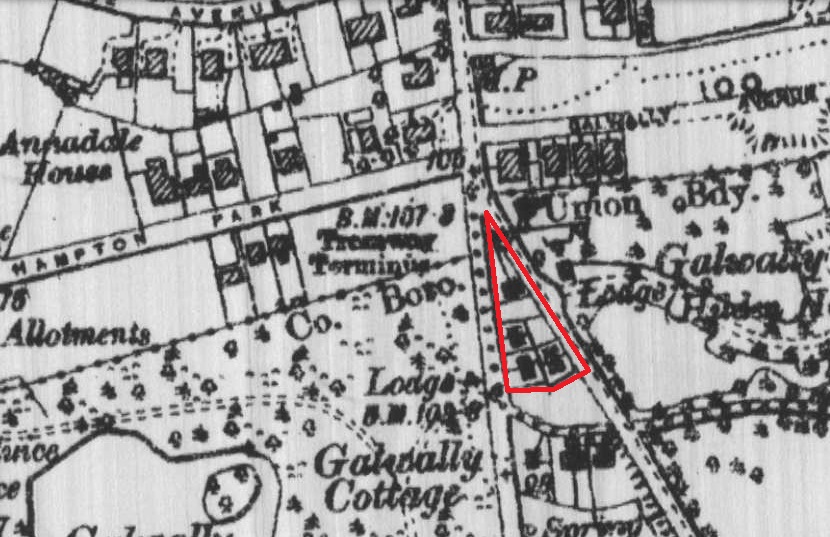

 This article commemorates the memory of Lance-Corporal Hugh McNeill of the Royal Marine Light Infantry who died on 21st June 1918, 100 years ago today.
This article commemorates the memory of Lance-Corporal Hugh McNeill of the Royal Marine Light Infantry who died on 21st June 1918, 100 years ago today. 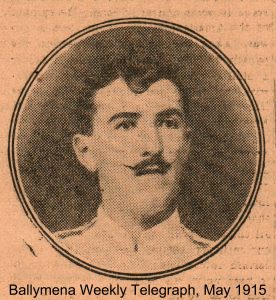 According to naval records, Hugh McNeill was born in Belfast on 5th January 1881. Hugh enlisted on 7th July 1899 and served in the crushing of the Boxer Rebellion (10th June to 31st December 1900) in China, for which he was awarded the China War Medal (1900). He subsequently served on
According to naval records, Hugh McNeill was born in Belfast on 5th January 1881. Hugh enlisted on 7th July 1899 and served in the crushing of the Boxer Rebellion (10th June to 31st December 1900) in China, for which he was awarded the China War Medal (1900). He subsequently served on 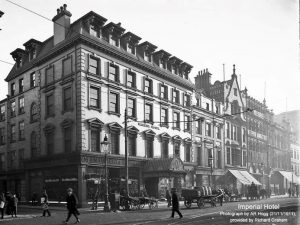

 Hugh McNeill then served with a Royal Naval Air Service’s Armoured Cars unit under Commander Charles Rumney Samson RN between 10th September 1914 and 17th October 1914 before returning to the Royal Naval Division. Following a period of furlough, an interview with Hugh McNeill was published in the Ballymena Weekly Telegraph in May 1915 in which he spoke highly of the “pluck and daring” of Commander Samson, particularly in engagements with roving units of Uhlans (Light Cavalry, with a Polish military heritage), saying that, “the Germans had come to greatly dread and fear Commander Samson and his gallant men”.
Hugh McNeill then served with a Royal Naval Air Service’s Armoured Cars unit under Commander Charles Rumney Samson RN between 10th September 1914 and 17th October 1914 before returning to the Royal Naval Division. Following a period of furlough, an interview with Hugh McNeill was published in the Ballymena Weekly Telegraph in May 1915 in which he spoke highly of the “pluck and daring” of Commander Samson, particularly in engagements with roving units of Uhlans (Light Cavalry, with a Polish military heritage), saying that, “the Germans had come to greatly dread and fear Commander Samson and his gallant men”.
 In the Preface to the book, Gavin says,
In the Preface to the book, Gavin says,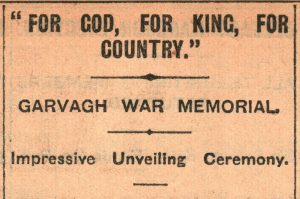
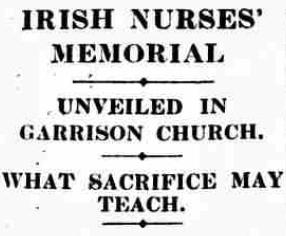
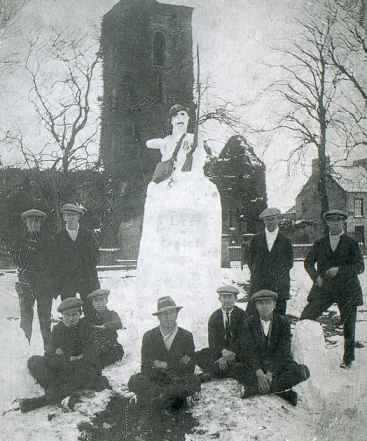
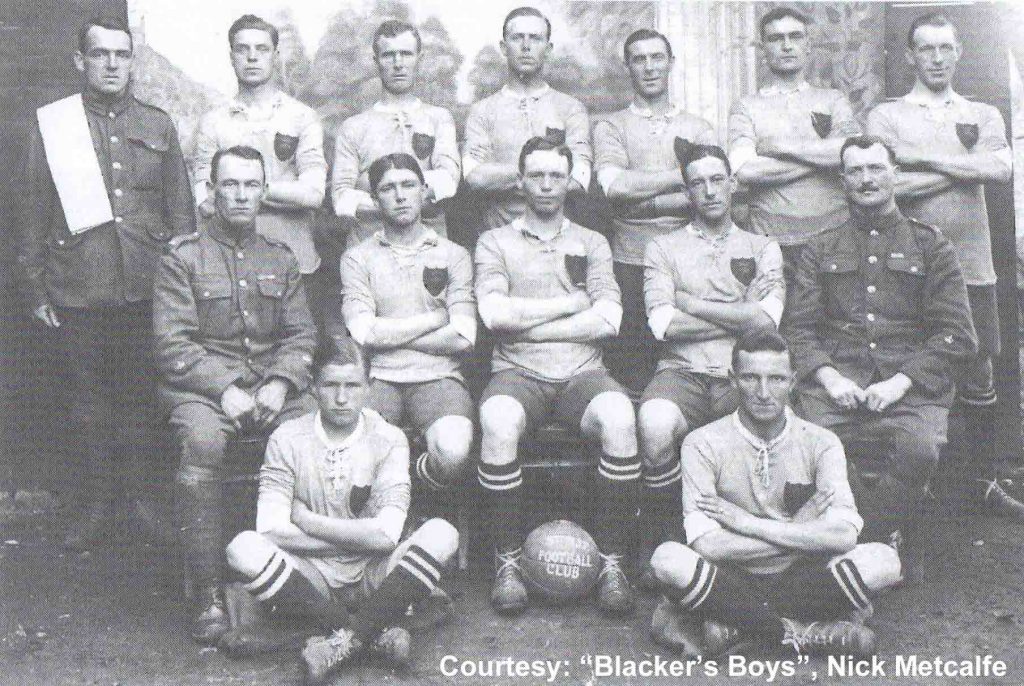
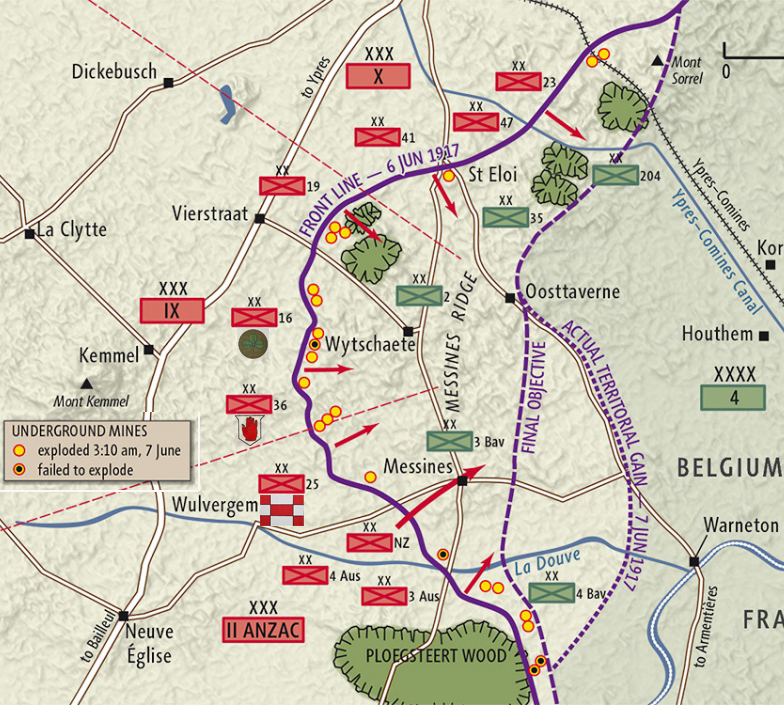

 Another stretcher-bearer from the Ulster Division demonstrated that political allegiance had no place on the battlefield.
Another stretcher-bearer from the Ulster Division demonstrated that political allegiance had no place on the battlefield. 
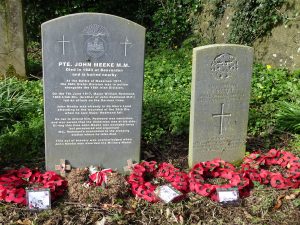 Major Redmond to the casualty clearing station located in the Catholic Hospice at Locre but he died later that afternoon. John Meeke’s brother, Samuel, died of acute pulmonary tuberculosis on 19th January 1919, a fortnight after arriving home, and his grave in Derrykeighan Old Graveyard is marked by a Commonwealth War Graves Commission headstone.
Major Redmond to the casualty clearing station located in the Catholic Hospice at Locre but he died later that afternoon. John Meeke’s brother, Samuel, died of acute pulmonary tuberculosis on 19th January 1919, a fortnight after arriving home, and his grave in Derrykeighan Old Graveyard is marked by a Commonwealth War Graves Commission headstone.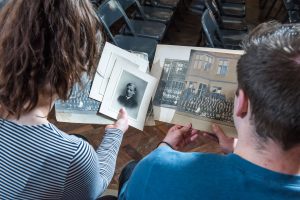 In the Central Hall at Campbell College the photographs of 126 pupils and one member of staff who lost their lives in WW1 sit embedded in the wood panelled walls. Deteriorating over time these images need to be preserved and digitally restored before they are lost forever. ‘The Men Behind the Glass’ will seek to protect these images, whilst uncovering the real life stories behind these men.
In the Central Hall at Campbell College the photographs of 126 pupils and one member of staff who lost their lives in WW1 sit embedded in the wood panelled walls. Deteriorating over time these images need to be preserved and digitally restored before they are lost forever. ‘The Men Behind the Glass’ will seek to protect these images, whilst uncovering the real life stories behind these men.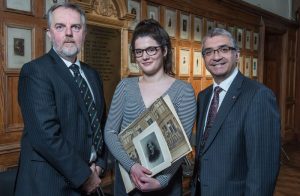 Mukesh Sharma, MBE, Committee Member for the Heritage Lottery Fund explains the importance of this project, “This is an exciting opportunity to open up the archives of Campbell College whose pupils played a key role in both WW1 and WW2. It offers the chance to pay respect to those lives lost but also to involve the whole community – encouraging everyone to tell the stories behind not just these 126 men, but all the men from East Belfast who made the ultimate sacrifice in WW1.”
Mukesh Sharma, MBE, Committee Member for the Heritage Lottery Fund explains the importance of this project, “This is an exciting opportunity to open up the archives of Campbell College whose pupils played a key role in both WW1 and WW2. It offers the chance to pay respect to those lives lost but also to involve the whole community – encouraging everyone to tell the stories behind not just these 126 men, but all the men from East Belfast who made the ultimate sacrifice in WW1.”